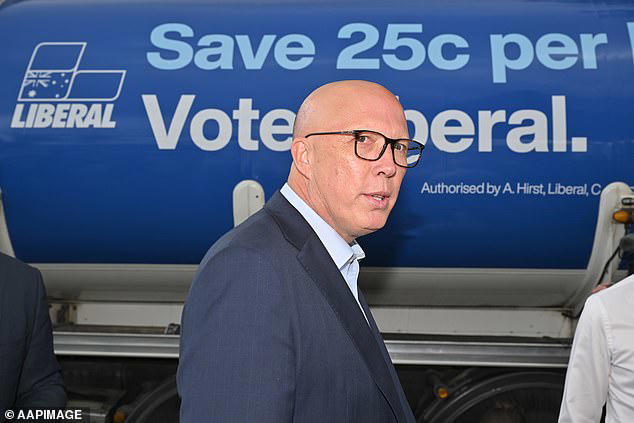The Key Differences Between Albanese And Dutton's Policy Proposals

Economic Policy
Approach to Fiscal Management
Anthony Albanese's economic plan prioritizes responsible spending and targeted investments. His approach focuses on sustainable economic growth through strategic infrastructure projects and social programs aimed at boosting employment and improving living standards.
- Increased investment in renewable energy: Creating jobs and fostering a cleaner energy future.
- Improved job security measures: Protecting workers' rights and ensuring fair employment practices.
- Focus on skills training and education: Equipping Australians with the skills needed for the future economy.
Peter Dutton, on the other hand, champions lower taxes and reduced government spending. His economic strategy emphasizes deregulation to stimulate private sector growth and boost economic activity.
- Tax cuts for businesses and high-income earners: Stimulating investment and economic activity.
- Reduced government regulation: Easing the burden on businesses and encouraging investment.
- Privatization of some public services: Increasing efficiency and reducing the role of government.
Managing Inflation
Albanese's approach to managing inflation involves strategies to alleviate cost-of-living pressures. This includes targeted support for vulnerable groups and initiatives to boost wage growth.
- Wage increases for essential workers: Ensuring fair compensation for those providing vital services.
- Cost-of-living relief packages: Providing direct financial assistance to households struggling with rising prices.
- Support for small businesses: Helping small businesses navigate inflationary pressures and maintain employment.
Dutton's strategy focuses on controlling government spending as a primary tool for curbing inflation, advocating for a sound monetary policy largely driven by the independent Reserve Bank.
- Fiscal responsibility: Prudent management of government finances.
- Limiting government intervention in the economy: Allowing market forces to play a larger role.
- Independent Reserve Bank policy: Maintaining the central bank's independence in managing monetary policy.
Climate Change Policy
Emissions Reduction Targets
Albanese's government has committed to ambitious emissions reduction targets, marked by significant investment in renewable energy and climate adaptation measures.
- Net-zero emissions target by 2050: A long-term commitment to reducing greenhouse gas emissions.
- Investment in renewable energy infrastructure: Building a cleaner energy future through substantial investment.
- Climate resilience initiatives: Protecting Australia's communities and environment from the impacts of climate change.
Dutton advocates for a more cautious approach, stressing the importance of balancing emissions reduction with economic growth and maintaining energy affordability.
- Support for technology-based solutions: Focusing on technological advancements to reduce emissions.
- Focus on affordable energy: Ensuring that energy remains accessible and affordable for all Australians.
- Concerns about the economic impact of aggressive targets: Weighing the economic consequences of rapid emissions reductions.
Investment in Renewable Energy
Albanese's policy prioritizes substantial investment in renewable energy sources, like solar, wind, and hydro power.
- Funding for renewable energy projects: Direct government funding to support the development of renewable energy infrastructure.
- Incentives for businesses and consumers to adopt renewables: Encouraging uptake of renewable energy technologies.
Dutton's approach emphasizes reliable and affordable energy, suggesting a potential mix of renewable and traditional energy sources. This may involve continued investment in fossil fuels.
- Support for new gas exploration projects: Maintaining energy security through continued exploration and production of natural gas.
- Investment in grid reliability: Upgrading the electricity grid to accommodate increasing renewable energy generation.
- Focus on energy affordability: Prioritizing keeping energy costs low for consumers and businesses.
Healthcare Policy
Medicare and Healthcare Funding
Albanese's policy commits to strengthening Medicare, the nation's universal healthcare system, with increased funding for public hospitals and improved access to healthcare services.
- Increased funding for public hospitals: Addressing hospital capacity issues and improving healthcare services.
- Improved bulk-billing rates: Making healthcare more affordable for patients.
- Focus on preventative healthcare: Investing in programs to prevent illness and promote health.
Dutton's approach aims to improve efficiency within the existing healthcare system, potentially including exploring greater private sector involvement.
- Improved efficiency in healthcare delivery: Streamlining processes and reducing administrative burden.
- Exploration of private sector partnerships: Considering the role of private healthcare providers in delivering services.
- Emphasis on patient choice: Giving patients more options in accessing healthcare services.
Conclusion
This comparison of Albanese and Dutton's policy proposals highlights significant differences in their approaches to key areas like economic management, climate change, and healthcare. Understanding these distinctions is vital for Australian voters. The choice between these two leaders represents a fundamental divergence in policy direction for the nation. By carefully considering the implications of each platform, Australians can make an informed decision when choosing their preferred approach on crucial issues impacting their lives. Further research into Albanese and Dutton's policy proposals, including detailed policy documents and independent analyses, is encouraged to ensure a well-informed vote.

 Erfolgreiche Schlichtung Verhindert Bvg Streik Zu Ostern
Erfolgreiche Schlichtung Verhindert Bvg Streik Zu Ostern
 Ayesha Howard And Anthony Edwards Shared Custody Arrangement
Ayesha Howard And Anthony Edwards Shared Custody Arrangement
 Sigue El Partido Almeria Eldense En Directo Por La Liga Hyper Motion
Sigue El Partido Almeria Eldense En Directo Por La Liga Hyper Motion
 Inavguratsiya Trampa Proti Vistavi Otello Yak Viglyadav Dzho Bayden
Inavguratsiya Trampa Proti Vistavi Otello Yak Viglyadav Dzho Bayden
 Steffens Subpar Performance Earthquakes Suffer Defeat Against Rapids
Steffens Subpar Performance Earthquakes Suffer Defeat Against Rapids
